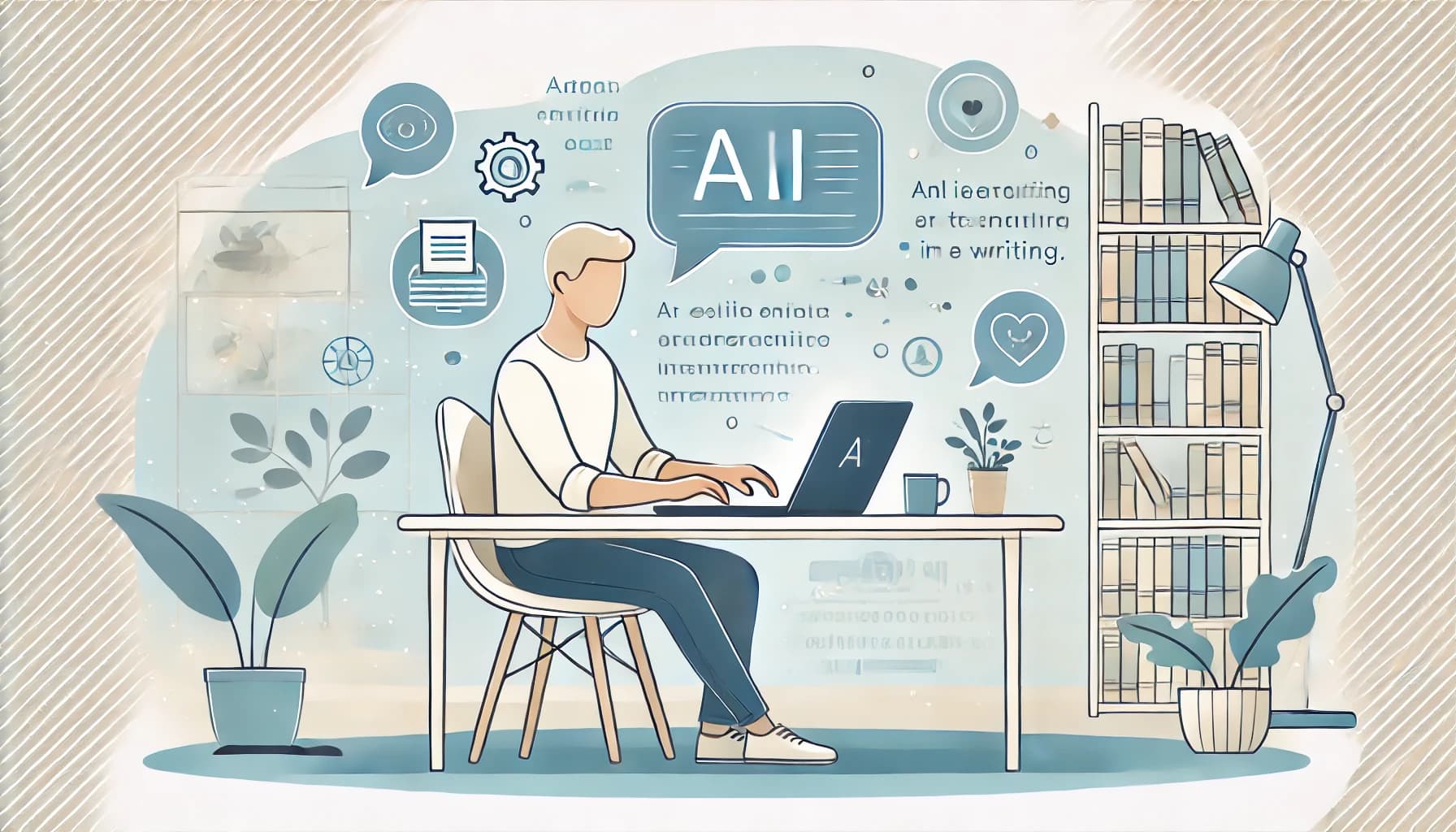Welcome to the Humanizing AI Text Guide!
This resource is here to help you turn robotic AI-generated content into natural, engaging, and authentic text. Whether you’re a marketer crafting persuasive copy, a business owner creating personalized communication, or a writer looking to refine AI output, humanizing text is a crucial skill. It enhances connection, builds trust, and ensures your content resonates with your audience.
In this guide, you’ll find step-by-step techniques, tools, and insights to make AI-generated text sound more human. From adding emotion and personality to tailoring content for specific audiences, these practical tips will help you create content that stands out. Let’s dive in and learn how to give AI-generated text that perfect human touch!
Why AI-Generated Text Often Feels Robotic
AI-generated text can be useful, but it often feels flat and mechanical. One big reason is that AI struggles with emotional depth. It can’t truly understand feelings like excitement, frustration, or joy, so its output may feel cold or impersonal. For example, instead of saying, “We’re thrilled to welcome you!” it might just write, “Welcome.”
Another issue is the over-reliance on generic phrases. AI tends to repeat common patterns like “This product is great” or “It is important to note.” While these phrases make sense, they lack the variety and creativity humans naturally add to writing. This repetition can make the content dull and predictable.
Finally, AI text often lacks individuality or a brand voice. A human writer might use humor, unique expressions, or a conversational tone to bring personality to their work. AI, on the other hand, tends to stick to safe, neutral language. This can result in text that doesn’t feel aligned with your brand or audience.
The good news? With the right techniques, you can fix these problems and make AI-generated text sound much more human.
Key Elements of Humanized Text
To make AI-generated text feel more human, there are a few key elements to focus on. These elements help create a connection with the reader and make the content engaging and authentic.
First, aim for a natural tone and flow. Human writing feels conversational, with sentences that vary in length and structure. AI often produces rigid or overly formal sentences, so breaking them up or adding casual phrasing can make a big difference.
Next, think about emotional resonance and relatability. Humans connect with words that evoke feelings or reflect shared experiences. For example, instead of saying, “This app is helpful,” say, “This app saves you time when you’re juggling a million things.”
Contextual adaptation and cultural awareness are also crucial. People from different places and industries have unique ways of communicating. For instance, what works in a casual tech blog might not work in a formal academic paper. Tailoring the content to your audience’s context ensures it feels relevant and relatable.
Finally, don’t forget unique voice and personalization. Every writer—and every brand—has a distinct way of communicating. Adding a signature tone, humor, or direct references to your audience (like “we know you’ll love this”) gives your text personality and makes it stand out.
By focusing on these elements, you can transform dry, robotic AI text into content that feels alive and engaging!

Step-by-Step Techniques to Humanize AI Text
Humanizing AI text takes effort, but following these steps will make it sound more authentic and engaging.
1. Analyze the Output
Start by reviewing the AI-generated text. Look for overly formal sentences or repetitive phrases that feel unnatural. Pinpoint areas that lack emotional depth or don’t fit the context. This helps you understand what needs improvement.
2. Inject a Conversational Tone
Make the text feel like a real conversation. Use contractions (like “you’re” instead of “you are”) and everyday phrases. Vary sentence lengths to create a natural rhythm. For example, replace “This is an essential feature” with “You’re going to love this feature!” It feels friendlier and more personal.
3. Add Personal Touches
Involve the reader by using pronouns like “we” and “you.” This makes the content feel direct and relatable. Reference common experiences to create a connection, such as saying, “We know how challenging it can be to stay organized.”
4. Include Emotional Language
Use words that stir emotions, such as “exciting,” “rewarding,” or “frustrating.” Match the tone to your audience—for example, enthusiastic for a product launch or empathetic for a problem-solving guide.
5. Focus on Contextual Adaptation
Adapt the text for your specific audience. Avoid generic phrases and instead include examples or scenarios they care about. For instance, if writing for teachers, mention classroom challenges or success stories.
6. Simplify for Clarity
Break down complex ideas into short, easy-to-read sentences. Avoid jargon unless it’s necessary for your audience. Clear writing ensures your message is understood.
7. Use Analogies and Stories
People love stories and comparisons. Instead of saying “AI can improve efficiency,” say, “Think of AI as your digital assistant, handling repetitive tasks while you focus on strategy.” It’s more engaging and easier to visualize.
8. Review and Edit for Consistency
After making changes, polish the text with grammar tools. Ensure the tone, style, and voice stay consistent throughout. This gives the content a professional finish.
By following these steps, you’ll turn robotic AI text into something your readers will enjoy and connect with!

Tools and Resources to Help Humanize AI Text
Humanizing AI text doesn’t have to be hard, especially when you use the right tools and resources. Here are some options to help you refine and improve your content.
1. Grammar and Style-Checking Tools
Tools like Grammarly and Hemingway Editor are excellent for polishing your text. Grammarly checks for grammar, spelling, and tone, helping your content sound clear and natural. Hemingway highlights overly complex sentences and suggests simpler alternatives to improve readability. Both tools are great for making sure your text flows smoothly and feels approachable.
2. AI Text Refinement Tools
There are tools specifically designed to enhance AI-generated content. Platforms like ChatGPT and similar services can refine and rewrite AI text when given clear instructions. Some tools even offer options to adjust the tone, length, or level of formality, making it easy to adapt the text to your audience.
3. Human-Like AI Content Platforms
Certain AI tools are built to produce more human-sounding content right from the start. For example, platforms like Jasper focus on creating conversational and engaging text that aligns with brand voices. These tools often come with pre-set templates for blogs, emails, and ads, making them helpful for quick projects.
Using these tools, along with the techniques outlined earlier, can save time and ensure your AI text is polished, relatable, and ready to engage readers!
Measuring the Success of Humanized AI Text
Once you’ve humanized your AI-generated text, how do you know it’s working? Here are a few key ways to measure its success:
1. User Engagement Metrics
Start by looking at metrics like click-through rates (CTR) and bounce rates. If your content feels more natural and relatable, people are more likely to stay on your site, click on links, and interact with your content. A lower bounce rate and higher CTR are clear signs that your audience is engaged.
2. Feedback and Conversions
Pay attention to feedback from your audience. Positive comments, higher ratings, or more social shares indicate your content resonates with readers. Additionally, track conversions—whether that’s signing up for a newsletter, purchasing a product, or completing a form. Humanized content often leads to better trust and connection, which translates into more action from your audience.
3. SEO Advantages
Humanized content can also perform better in search engines. Algorithms are getting better at spotting generic or robotic text, which could hurt your rankings. By adding emotion, uniqueness, and a natural tone, your content is less likely to trigger AI-detection filters. This gives you an edge in SEO, as search engines reward content that’s engaging and original.
By keeping an eye on these metrics, you’ll know if your efforts to humanize AI text are paying off. Over time, small improvements can lead to big results in engagement, trust, and performance.
Conclusion
Humanizing AI-generated text is essential for creating content that feels authentic, relatable, and engaging. By using techniques like adding a conversational tone, emotional language, and personal touches, you can transform robotic output into something your audience will connect with.
Remember, success comes through experimentation and iteration. Try different approaches, test what works best for your audience, and keep refining your content over time.
Now it’s your turn! Apply these techniques to your AI-generated text and see the difference it makes. We’d love to hear your experiences—share your results or feedback in the comments!




